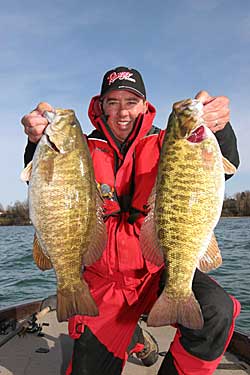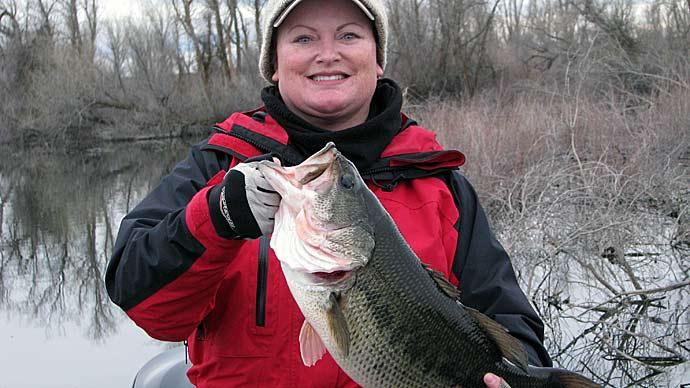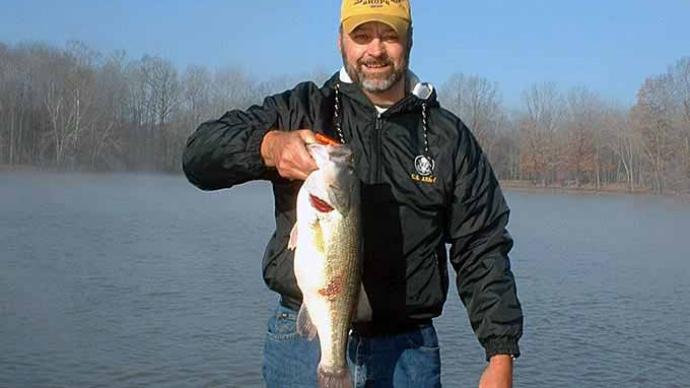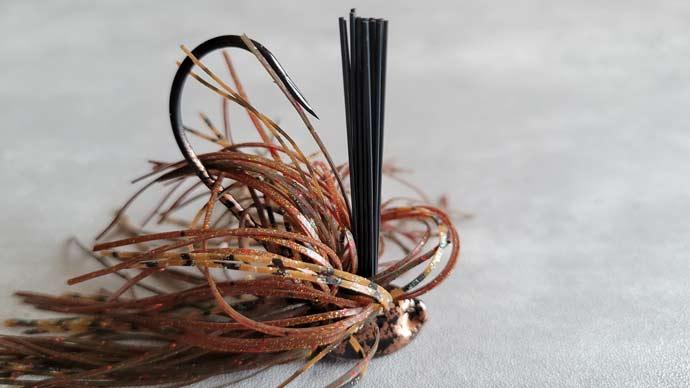
Catching bass in cold water is one of the least understood topics in fishing. That doesn’t mean it’s always difficult, but it can be perplexing.
There is a lot of confusion as to what constitutes cold water. In the South, water below 55 degrees makes for tough fishing conditions. In the North, where bass are accustomed to lower temperatures, fishing can be good in water temperatures above 45 degrees.
The type of fish you pursue can make a difference, too. Largemouth tend to have a lower tolerance for cold water, whereas smallmouth and spotted bass are more active in cold water.
I’ve fished in New York for smallmouth when water temperatures were in the low 40s and consistently caught fish. On the other hand, in the later 1970s, I fished a three-day tournament at West Point Lake, Ga., when 65 top anglers only caught one fish in 45-degree water. There isn’t a universal water temperature at which fish are active or inactive. A lot depends upon the region you’re fishing, the clarity of water and the type of fish in the lake.
Furthermore, the entire lake is rarely the same temperature. During those late-winter, early-spring days, some sections of a lake may warm more quickly. I’ve seen days when a minor change from 45 to 47 degrees made a difference in how many fish I caught.
To find those subtle changes, keep a watchful eye on your temperature gauge and key on the still-water bays on the east side of the lake. Calm water absorbs heat faster, and the eastern shore benefits from the sun for a longer period of the day. That’s also why sunny afternoon hours are more productive than early morning hours when the water is cold.
Water clarity matters, too. Bass are more apt to move shallower in off-color water than in cold, clear water. Stained water absorbs heat better, so if you can find still, off-color water, it’s probably going to be warmer and the bass will be more active.
That raises another misconception about cold water. Many anglers believe bass stay deep in cold water. That’s usually true in clear water, but if the water dirties, the fish move shallower. I’ve caught bass from 3 feet of water when the surface temperature was 50 degrees. It’s the absolute worst fishing condition. When that happens, look for pockets of clear water and work them slowly.
There are three lures that work best for me in cold water. The jig-and-pig is my first choice. I fish it v-e-r-y slowly around sunny banks and heavy cover. I also flip it into each brushpile or along a dock piling three or four times, trying to coax the fish into biting.
My second tactic is to slow-roll a spinnerbait around trees that lie off steep banks. Fallen trees give bass the cover they need and a variety of depths. While fish may be on the deep end of the tree in the morning, they move up to the shallow end once the water warms in midday hours.
If fish are away from the banks, I’ll use tight-wiggling crankbaits. Tight-wiggling crankbaits are more effective in cold water than those with wide wobbles.
Regardless of your lure choice, fish slowly and methodically. Your patience will be rewarded when you put a lure on the end of a big bass’ nose.
You can find more articles, quick tips and much more at HankParker.com.




